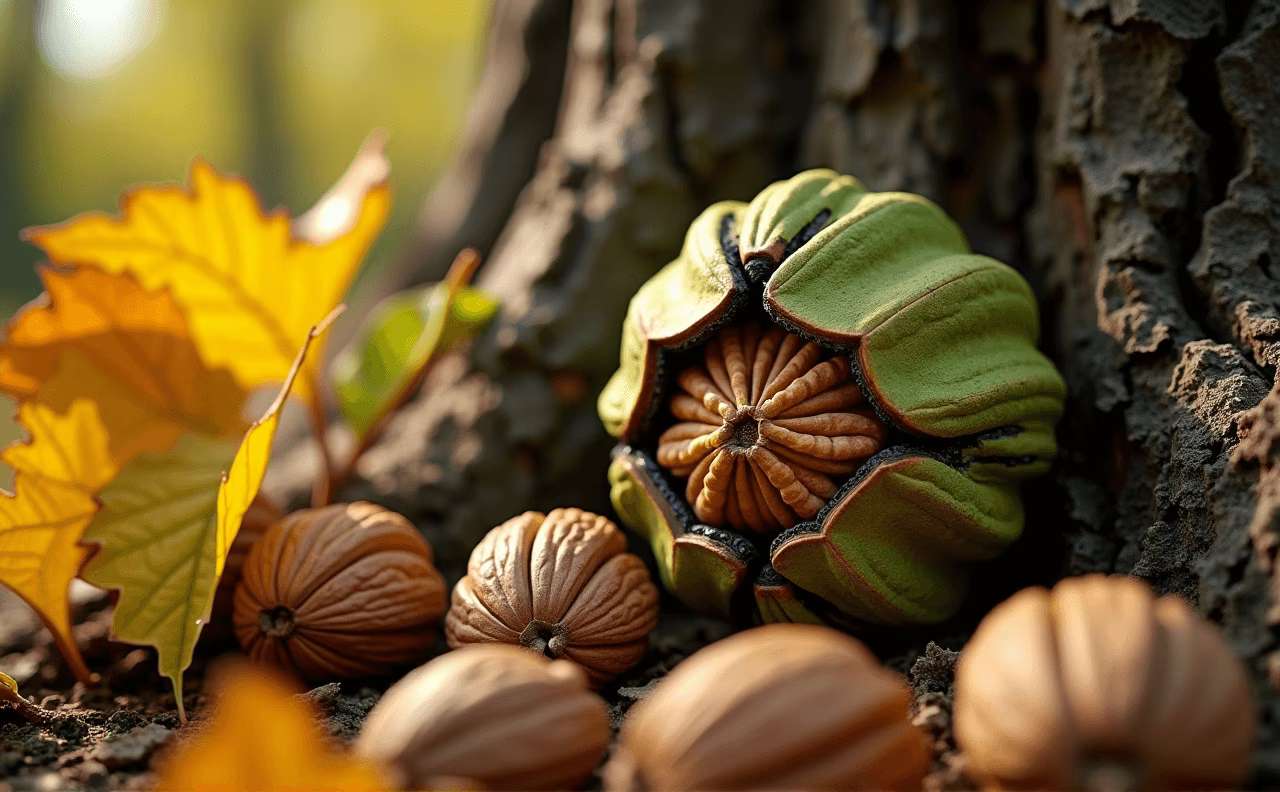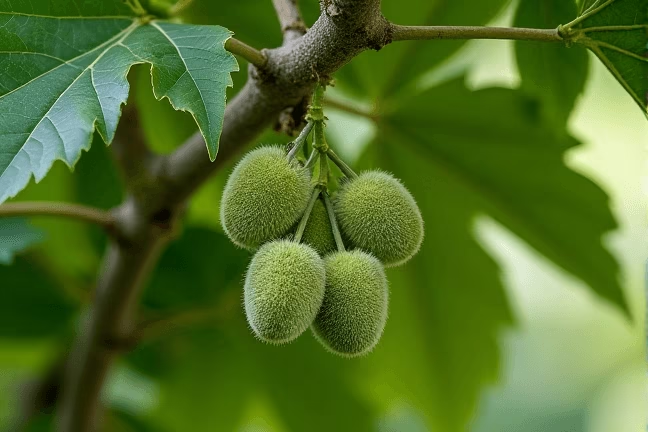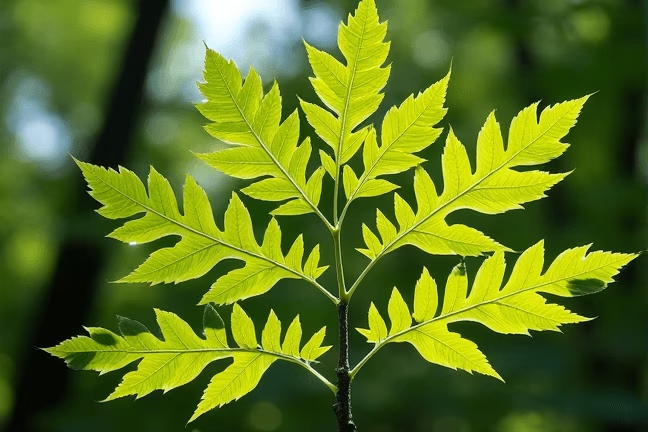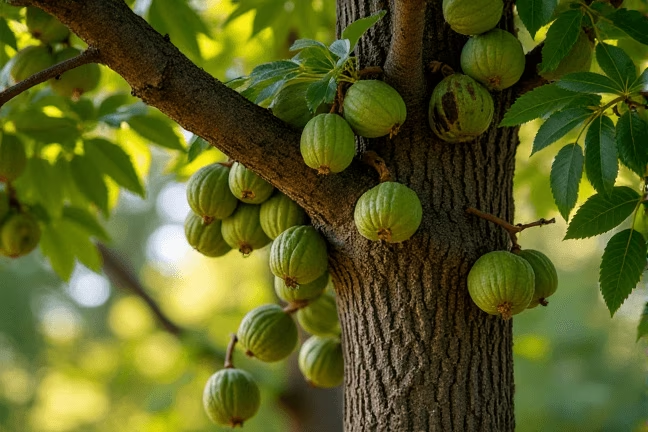
Black Walnut
Juglans nigra
Grow Time
10-15 years
Sunlight
Full Sun
Watering
Every 7-10 days
Toxicity
Conditionally toxic
Video content from YouTube
Watch on YouTubeHow to plant Black Walnut: Step-by-Step Guide
Growing Guide
Preparation
Choosing the Right Spot for Your Black Walnut Tree
Hey there, future tree planter! The Black Walnut is a beautiful, long-lived tree that can grow quite large and live for decades. It's important to choose the right spot from the start since it’s not a tree you’ll be moving later.
- Space: Black walnut trees need plenty of room to grow because they can reach up to 50-75 feet tall and spread out just as wide. Make sure there’s at least 50 feet of space around where you want to plant it.
- Sunlight: These trees love sunlight, so pick an open area with full sun (at least 6 hours of direct sunlight every day).
- Soil: Black walnuts prefer deep, rich soil but can tolerate different types as long as it drains well. Avoid areas where water tends to pool after rain.
What you'll need:

A young Black Walnut sapling (easier than starting from seed)

Compost or organic matter (optional, to enrich the soil)

Mulch (to keep moisture in)

Watering can or hose
Tip: If you’re planting more than one Black Walnut tree, space them at least 50-70 feet apart!
Timing
The best time to plant a Black Walnut tree is in early spring when the ground has thawed but before the heat of summer. This gives the roots time to settle in before the tree needs to handle hot weather.
Planting

Planting Your Black Walnut Sapling
Alright, let’s get this tree into the ground!
- Digging the Hole:
- Dig a hole about twice as wide as the root ball of your sapling, but only as deep as the root ball itself. This gives the roots room to spread out without being buried too deeply.
- Prepare the Soil:
- Mix some compost or organic material with the soil you dug out if the soil isn’t very rich. This will give your tree a nutrient boost as it starts growing.
- Place the Sapling:
- Gently place the sapling into the hole, making sure it stands straight. Spread out the roots carefully around the base.
- Backfill the Hole:
- Fill the hole back in with the soil-compost mix, gently pressing down as you go to avoid air pockets. Don't press too hard—just enough to stabilize the tree.
- Water Thoroughly:
- After planting, water the tree generously. You want the soil to be moist but not soggy. This helps the roots settle and start growing.
- Add Mulch:
- Spread a layer of mulch (about 2-3 inches thick) around the base of the tree, keeping it a few inches away from the trunk. This helps retain moisture and keeps weeds down.
Tip: Don’t plant other smaller plants too close to the base of the tree. Black Walnut trees release a chemical called juglone, which can affect nearby plants, especially vegetables like tomatoes and potatoes.
Growing Care




Sunlight and Watering Needs
Your Black Walnut tree loves the sun, so make sure it gets plenty of it! As for watering, here’s what you should do:
- Watering:
For the first year, water your tree regularly—about once a week unless there’s heavy rain. After that, the tree will become more drought-tolerant, but during dry spells, give it a good soak every couple of weeks. - Mulching:
Keep that mulch layer around the base. It helps conserve moisture and prevents weeds from competing with your tree for nutrients.
Fertilizing Tips
- Black Walnut trees don’t need much fertilizer, but you can give them a little boost in early spring with a balanced, slow-release fertilizer if the soil is poor.
- Avoid High-Nitrogen Fertilizers: Too much nitrogen can cause the tree to focus on leaf growth rather than developing strong roots and nuts.
Pruning and Maintenance
- Prune Sparingly: Black Walnuts don’t require much pruning, but you can remove any dead or damaged branches in late winter or early spring. Always use clean, sharp tools to avoid spreading disease.
- Watch for Pests: Black Walnut trees are pretty resilient, but occasionally pests like aphids or caterpillars may show up. If you notice any, a gentle spray of water or insecticidal soap should take care of them.
Tip: Be patient! Black Walnut trees take several years to mature and produce nuts—sometimes up to 10 years—but they’re worth the wait!
Harvesting



When to Harvest
You won’t see nuts right away, but once your Black Walnut tree starts producing, here’s how you’ll know they’re ready:
- Timing: Nuts typically ripen in late summer to early fall, usually between September and October.
- Signs They're Ready: The green outer husk will start to split open, and the nuts inside will begin to fall to the ground. That’s your cue!
How to Harvest
- Collecting:
Gather the fallen nuts from the ground. Wear gloves when handling them because the outer husk can stain your hands (and clothes!). - Hulling:
Remove the green outer husk by rolling the nuts under your foot or using a small tool. (Be careful not to damage the nut inside.) You can also leave them in a bucket of water; the husks will float, making it easier to separate them. - Drying:
Once the husks are removed, rinse the nuts and let them dry in a cool, dry place for a few weeks. This helps improve their flavor. - Cracking:
Black Walnut shells are tough! Use a nutcracker or hammer to crack them open carefully. Inside, you’ll find the delicious nutmeat.
Tip: Store the dried nuts in a cool, dry place, and they should last for months. You can also freeze them for longer storage.
Plant Care FAQ
1. Why Are My Leaves Turning Yellow?
Cause: Could be overwatering, poor drainage, or a lack of nutrients.
Solution: Check the soil moisture. If it’s too wet, reduce watering. Also, consider adding some compost to provide extra nutrients.
2. Can I Grow Grass Under a Black Walnut Tree?
Answer: It’s tricky! The juglone chemical produced by the tree can prevent certain grasses and plants from thriving. If you want to grow something underneath, try shade-tolerant plants like hostas or ferns.
3. What Should I Do About Falling Nuts?
Answer: Falling nuts can be a bit messy, especially if you have a large tree. Regularly collect them to prevent them from staining sidewalks or lawns. You can also use them for crafts or compost the hulls (after removing the nuts).
4. Is It Normal for My Tree to Lose Some Leaves Early?
Answer: Yes, Black Walnut trees often drop leaves earlier than other trees in the fall. It’s part of their natural cycle, so no need to worry!
5. How Do I Protect My Tree from Squirrels?
Answer: Squirrels love Black Walnuts! While it’s hard to completely stop them, you can try shaking the tree gently to dislodge nuts before they do, or use netting to protect lower branches.
Pro Tips
1. Juglone Awareness
Remember that Black Walnut trees release juglone, a chemical that can harm sensitive plants. Avoid planting tomatoes, potatoes, or peppers nearby. Instead, opt for juglone-resistant plants like beans, corn, or raspberries.2. Patience is Key
It might take several years before your tree starts producing nuts. But once it does, you’ll have a bountiful harvest for years to come!3. Stain Alert
The outer husks of Black Walnuts can stain your hands, clothes, and surfaces. Always wear gloves and old clothes when handling them.4. Natural Dye
The husks can be used to make a natural dye for fabric or woodworking projects. If you’re crafty, experiment with the colors you can create!5. Fall Cleanup
Rake up fallen leaves and nuts regularly. Not only does this keep your yard tidy, but it also reduces the chance of mold or pests gathering around the tree.6. Companion Planting
Consider planting daffodils or other bulb flowers around your Black Walnut tree. They’re juglone-resistant and will add color to your landscape in the spring.7. Wildlife Attraction
Black Walnut trees are great for attracting wildlife! Birds and squirrels love the nuts, and larger animals like deer may enjoy the shade and fallen leaves.